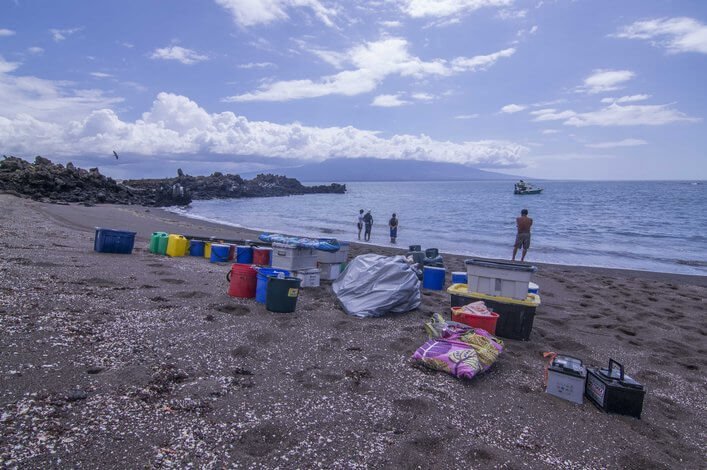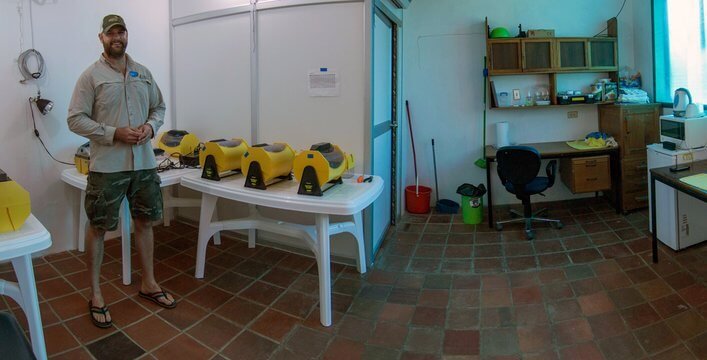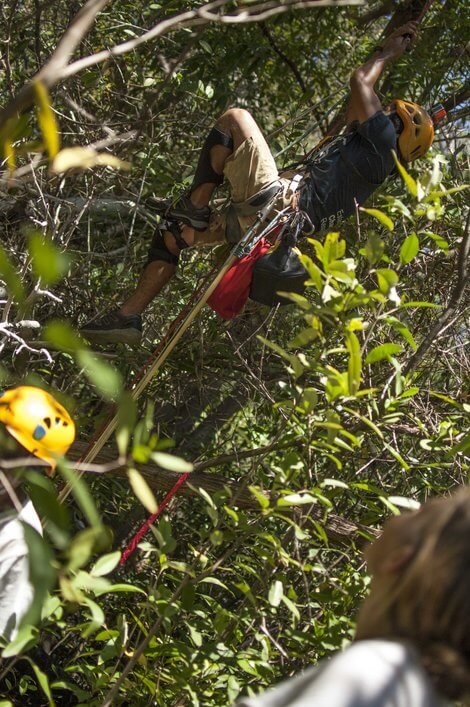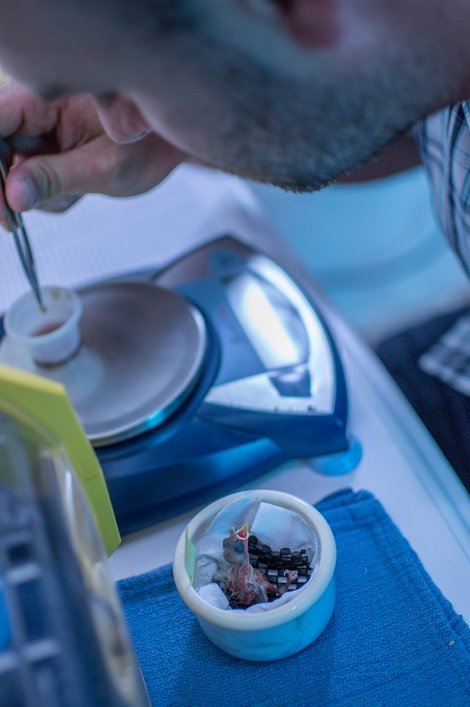
Climbing equipment, incubators and generators with solar panels are some of the tools that are part of the materials that the mangrove finch conservation project team requires to begin the fourth season of captive rearing. This species has been severely affected by the parasitic fly Philornis downsi, the larvae of which feed on the blood of the defenseless chicks in the nest. There are only an estimated 100 mangrove finches remaining in a small area on the northwest of Isabela Island. This year's work team is comprised of five staff members and volunteers from the Charles Darwin Research Station (CDRS), four members of the San Diego Zoo and the Auckland Zoo, and rangers of the Galapagos National Park Directorate (GNPD).

After organizing and cleaning the materials that were stored for eight months following the end of the previous season, the team of scientists, staff and volunteers undergo a quarantine process 48 hours prior to the field trip. Meanwhile, the team from San Diego Zoo Global prepare the breeding laboratory to the CDRS facilities. This includes sterilization of all equipment and the entire laboratory which needs to be maintained at a stable temperature.

On February 18th, following 6 hours of boat travel the team arrived at Playa Tortuga Negra, the mangrove forest where the remaining population of this species of finch is. The forest consists of red mangrove, black mangrove, and white mangrove, some of which measure more than 20 meters high. In order to find nests of breeding birds the team observe territories and monitor calls, "the males sing when they begin to nest and if we are in time we find the nests in this phase in which they are easy to locate. When the female begins to incubate it is more difficult to find them", says project leader Francesca Cunninghame. Nests in many cases are more than fifteen meters high in the mangroves. That is when climbing skills are put to the test! When an active nest site is found, climbing equipment is placed with all the necessary security measures, and when transport for the eggs is possible the identified nests are collected. This season a total of 4 nests were collected.

One of the achievements confirmed by the field team was the appearance of five finches reared in captivity in previous years and two of the individuals nesting with wild partners. "The observation of captive-reared finches surviving in the wild in the long term and also seeing two of these individuals reproducing as part of the wild population shows that the head starting program is reaching the goal of increasing the population size of the mangrove finch", mentioned F. Cunninghame.

The state of the eggs is determined by candling (carefully shining a light through the egg), the darker they are, the sooner they are about to hatch. Following hatching, the finch chicks are fed every hour from 6 am to 8 pm the care of the chicks is very delicate and is led by experienced staff from the collaborating zoos, with local project assistants and volunteers receiving training in the techniques. Each year the head starting season continues until May and we will continue to report on the progress as it takes place within the facilities of our Scientific Station in Puerto Ayora. This year the team found that arid climatic conditions where the finches live resulted in fewer nesting pairs, however all nests that were possible to collect were done so successfully.

The Mangrove Finch Project is a bi-institutional project carried out by the Charles Darwin Foundation and the Galapagos National Park Directorate in collaboration with San Diego Zoo Global, Auckland Zoo and Durrell Wildlife Conservation Trust. The project is supported by Marguerite Griffith-Jones, GESS Charitable Trust, Decoroom Limited, and Holbeck Charitable Trust, Foundation Ensemble, Friends of Galapagos Switzerland, The Prince Bernhard Nature Fund, Individual donors via the International Community Foundation, The Leona, M And Harry B. Helmsley Charitable Trust, Galapagos Conservation Trust and the British Embassy in Ecuador.





